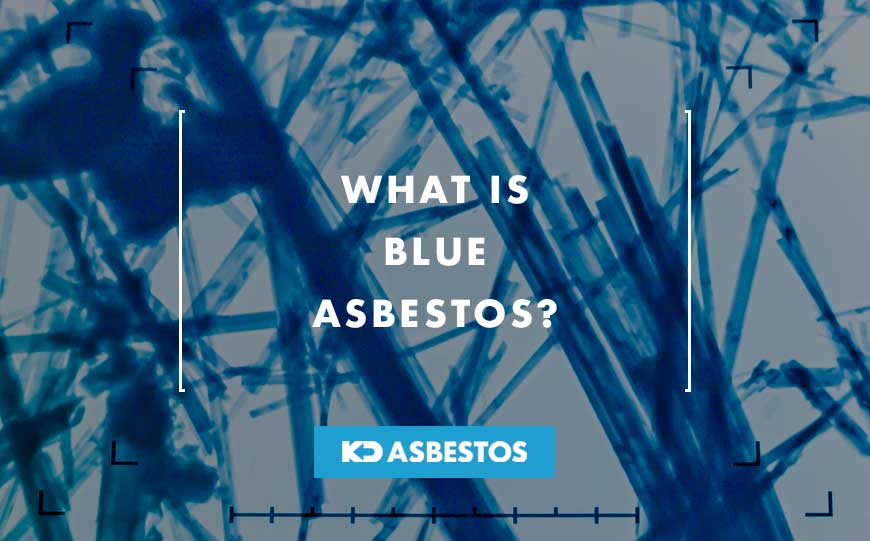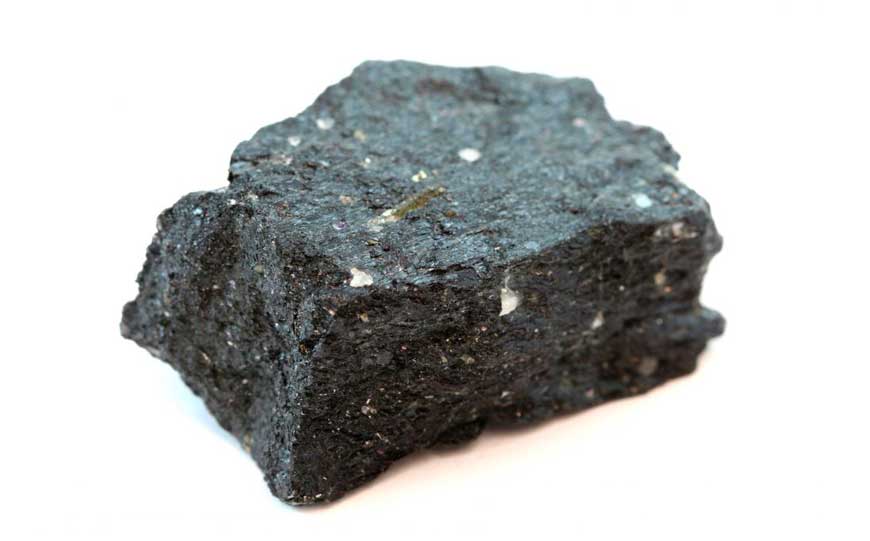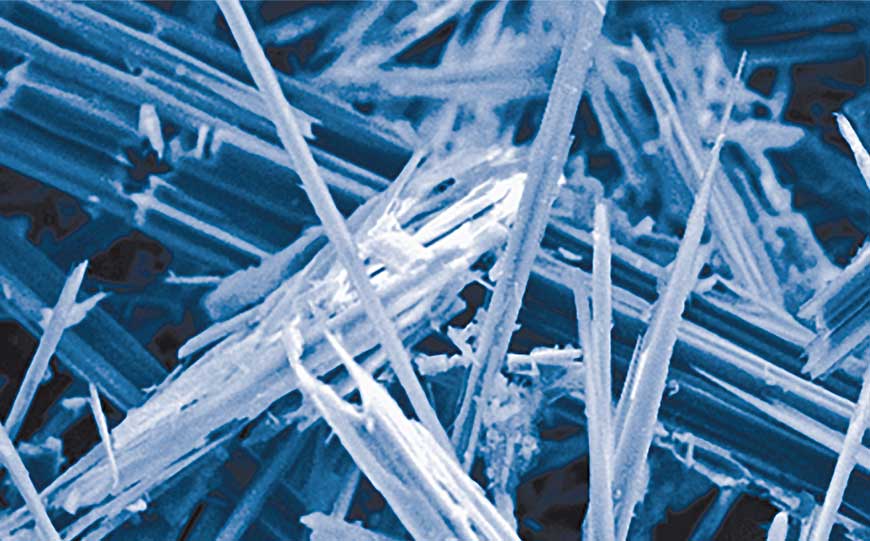
Blue asbestos, more commonly known as crocidolite, is a type of asbestos that’s part of the naturally occurring amphibole group of fibrous minerals.
It’s characterised by its blue-grey tone and long, thin fibrous crystals.
In this article, we take a deep look into what blue asbestos is, where it was typically used and whether it poses a danger to health.
Table of Contents
What is the Amphibole Group of Minerals?

Amphibole. Image credit: Minerals Education Coalition
The amphibole mineral family is a group of complex silicate minerals characterised by their double chain structure.
Amphibole minerals are composed of oxygen, silicon, and other elements such as magnesium, iron, aluminium, calcium, sodium, and potassium.
The family includes many different mineral species, including:
- tremolite
- actinolite
- hornblende
- anthophyllite
- crocidolite (also known as blue asbestos).
This group of minerals are often found in metamorphic and igneous rocks, as well as hydrothermal veins and certain sedimentary rocks.
Where was Blue Asbestos Used?

Magnified Blue Asbestos Fibres. Image credit: Lucion Services
Blue asbestos was widely used in a variety of commercial and industrial applications due to their high strength, durability, and heat resistance
These include:
Insulation
Blue asbestos was commonly used in insulation materials for buildings, pipes, and boilers due to its excellent insulating properties.
Construction
Blue asbestos was used in a variety of construction materials, including cement, roofing, flooring, and plasterboard.
Automotive Industry
Blue asbestos was used in brake linings, clutch facings, and gaskets in automobiles and other vehicles.
Electrical Industry
Blue asbestos was used in electrical insulation materials, including wiring, switches, and circuit breakers.
Textiles
Blue asbestos was used in the manufacture of fireproof textiles and protective clothing for industrial workers.
Some amphibole minerals such as crocidolite (blue asbestos) and amosite (brown asbestos), are associated with serious health risks when inhaled, as they can cause various types of cancers, mesothelioma, and other respiratory diseases.
As a result, the use of these minerals has been banned in the UK since last century.
Is Blue Asbestos Dangerous to Health?

Image credit: Shutterstock
Blue asbestos (crocidolite) is extremely dangerous to your health.
Exposure to blue asbestos fibres can cause serious respiratory health problems, including lung cancer, mesothelioma, and asbestosis.
These health problems can take many years to develop and can eventually become fatal.
When blue asbestos fibres are inhaled, they can become lodged in the lungs, causing scarring, inflammation, and damage to the lung tissue.
Over time, this can lead to the development of lung cancer or mesothelioma.
Mesothelioma is a rare and aggressive form of cancer that affects the lining of the lungs and other organs.
Asbestosis is another serious respiratory disease that is caused by exposure to asbestos fibres.
This condition is characterized by scarring of the lung tissue, which can make breathing difficult and can reduce lung function over time.
Due to the serious health risks associated with exposure to blue asbestos, the use of this material was banned in the UK.
It’s important to take appropriate safety measures when working with any asbestos containing materials, such as wearing protective gear and following proper handling and disposal procedures.
Ideally, you should never handle any material suspected of containing blue asbestos yourself.
Instead, you should consult a fully licensed asbestos removal contractor to carefully remove and dispose of any hazardous material.
Conclusion
Blue asbestos, most commonly known as crocidolite, is just one type of asbestos.
But what’s important to note is that this type of asbestos is the one that’s most dangerous to health.
If you suspect you have items within your home, premises or building potentially containing crocidolite, you should contact an asbestos removal specialist to inspect and carry out asbestos testing.
Following a thorough asbestos survey, you will then have a clearer idea of whether the material can be left in situ or needs to be removed.